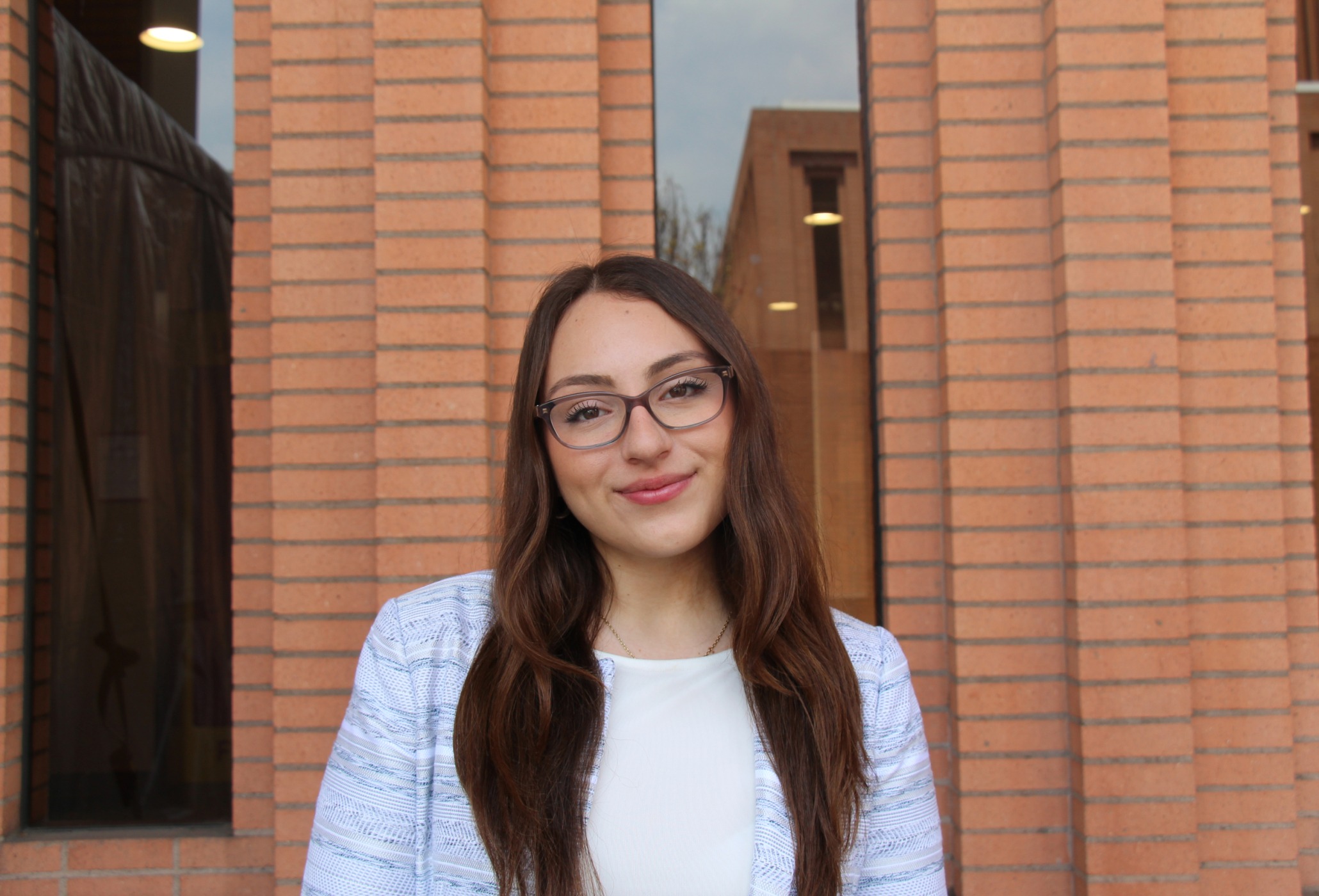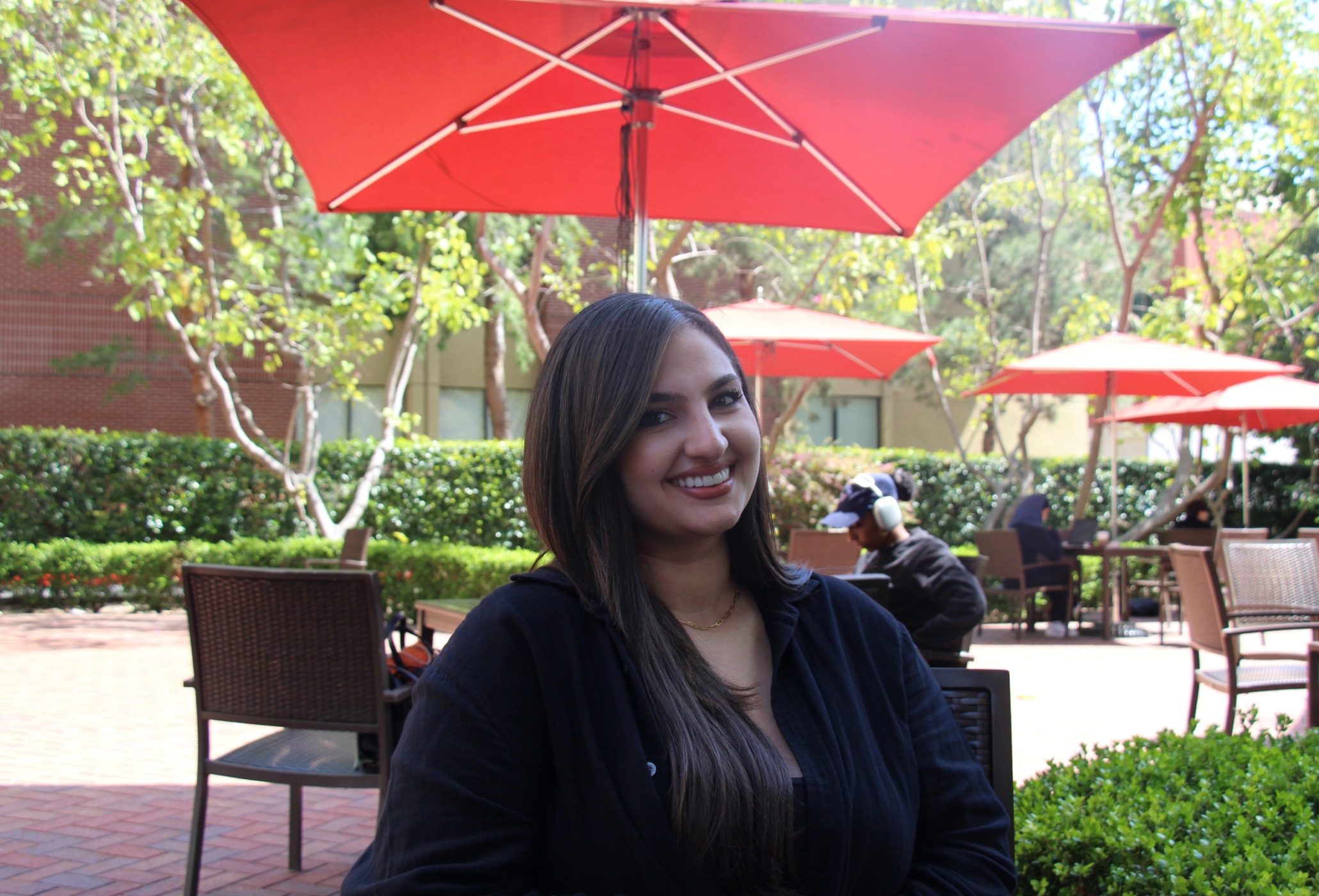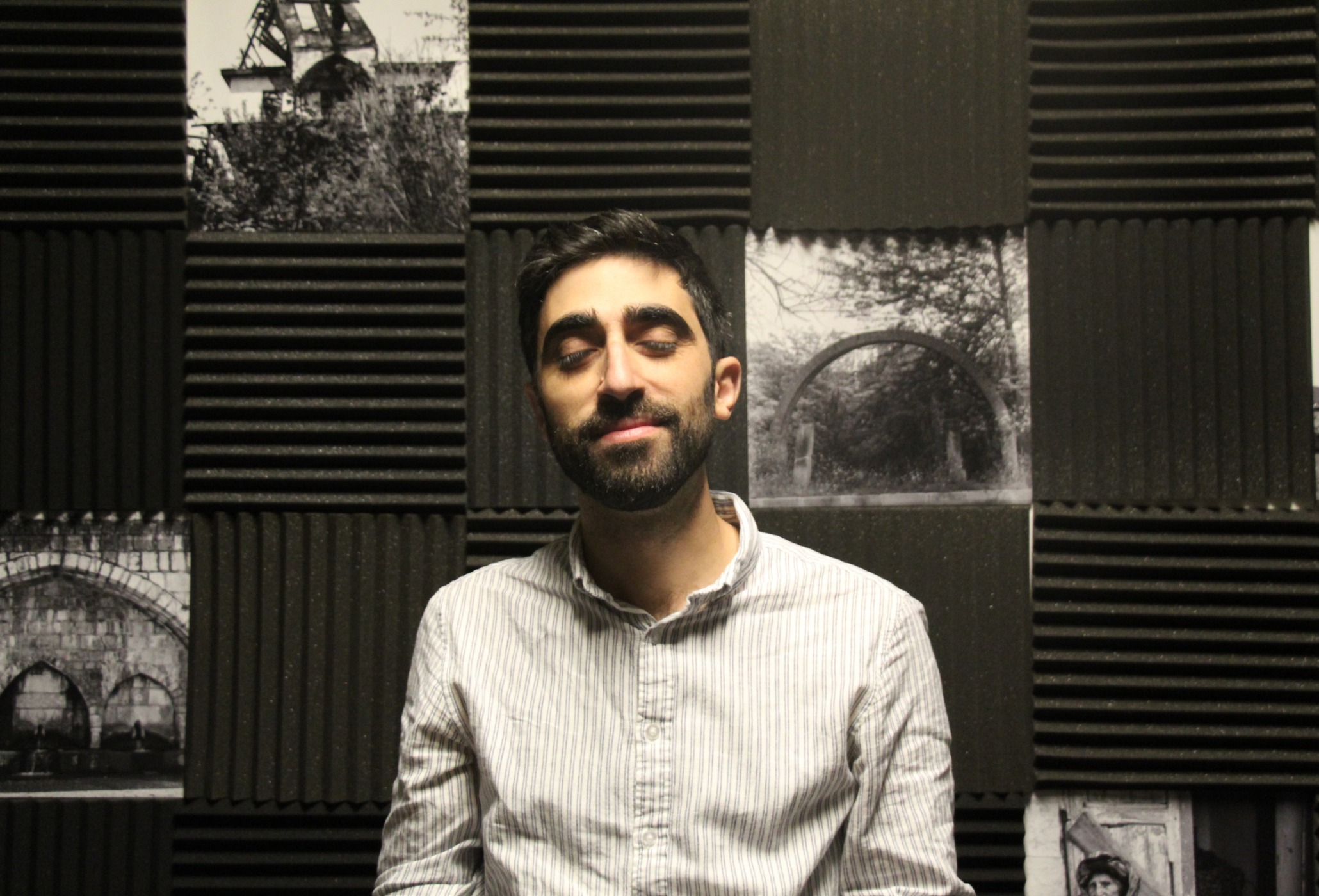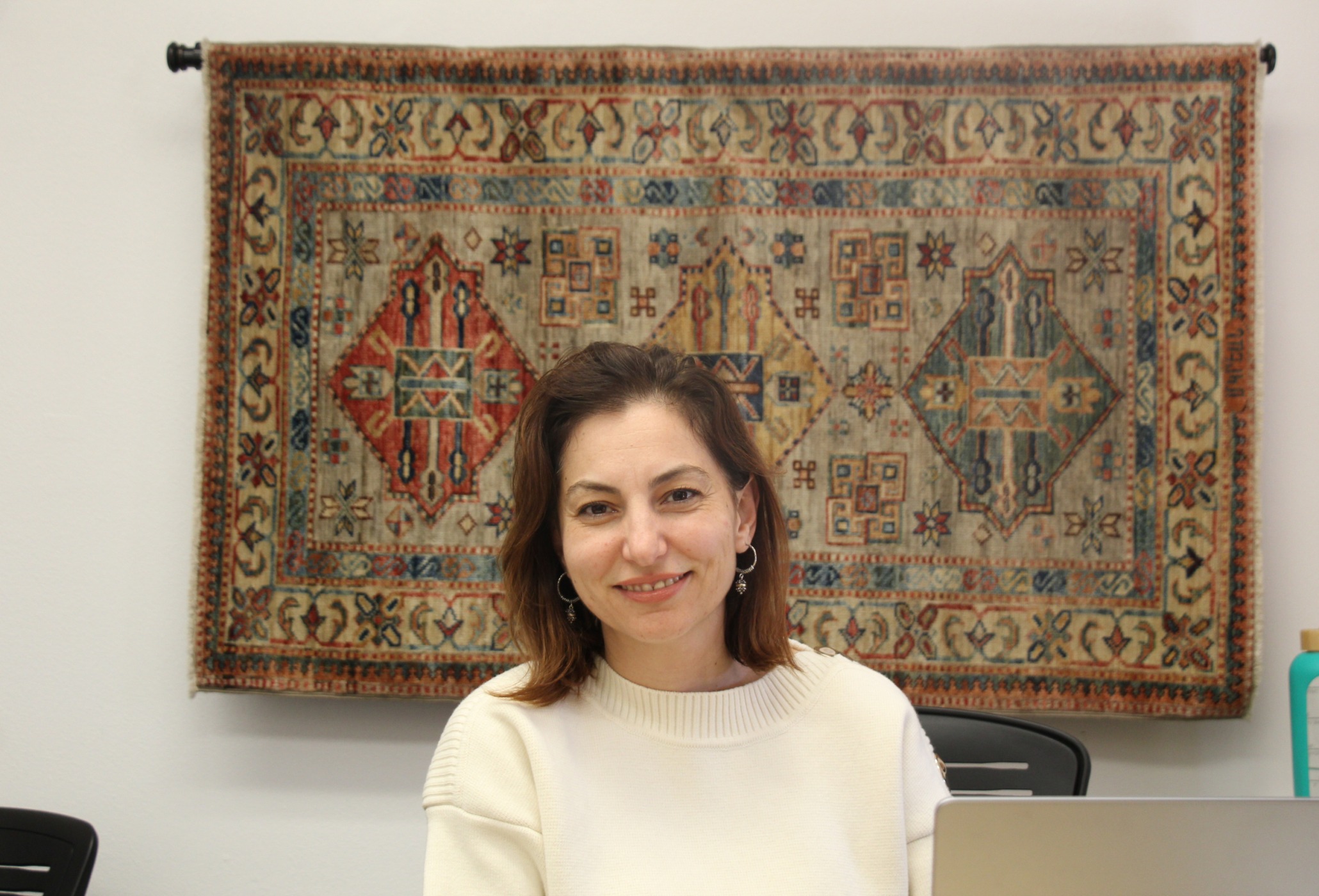Daily Trojan Magazine
Armenian History Month at USC — 100 years in the making
A look into the people, events and emotions behind the now University-supported monthlong celebration of Armenian culture.
A look into the people, events and emotions behind the now University-supported monthlong celebration of Armenian culture.

Every fall, the campus of the University of Southern California is vibrant and full of energy on football game days. Thousands of students, alumni, friends and family swarm campus as early as they can — partying on college grounds for hours before making the pilgrimage across Exposition Boulevard to the Los Angeles Memorial Coliseum. Tailgate tents take up nearly every inch of the University Park Campus, with the most frequented and student-run ones claiming the peak real estate that is McCarthy Quad.
Among them, flying high above the crowds, is an Armenian flag. It belongs to the tent designated for the USC Armenian Students’ Association and its guests, a group which makes up a sizable portion of the USC community, but has often felt its representation at the University has been inadequate — until this month.
For the first time, USC is recognizing April as Armenian History Month, an effort that many say was months in the making and long overdue.
Los Angeles is home to the largest Armenian community outside of Armenia itself, with a population of over 200,000 Armenians and counting. They are a diasporic people, scarred by the genocide against them in 1915, and the years of cruelty they have faced since at the hands of Turkey and Azerbaijan.
Armenians leaving the Ottoman Empire in the late 1800s settled throughout the United States, but Fresno, California, was particularly enticing because of its agricultural similarities to the land they had left. Slowly, then, these communities moved towards the urban draw of L.A.
In September 2023, Azeri forces launched attacks against the Nagorno-Karabakh region of Armenia — known to Armenians as the ancestral land of Artsakh — killing many residents and forcing many more to flee.
Around the same time, the USC Center for Public Diplomacy hosted the Turkish Ambassador to the United States Hasan Murat Mercan at a “Türkiye Conference” at Annenberg Hall. Unbeknownst to the University, the ambassador brought with him Ramil Gurbanov, consul general of Azerbaijan in Los Angeles.
Upon hearing of this event, Armenians at USC and in L.A. were furious, demanding that the event be canceled and, when it went on, protesting for hours both inside and outside the venue. In the aftermath, an investigation by the Daily Trojan revealed USC’s hidden response to the conference, as well as to the elected officials who had condemned it.
But, as multiple people told me, that is not how Armenians want to be remembered.
When she was 10 years old, Shushan Karapetian immigrated to the United States with her family from Yerevan, the capital of Armenia, which at the time was under Soviet rule. They moved to Los Angeles to join an uncle of hers who already lived there. Speaking little English, Karapetian was worried that she would have a rough time integrating and assimilating into Southern California culture. But when she joined her new school, she found many of her classmates were Armenian as well.
“People always say, ‘Well, was there a culture shock?’ There really wasn’t,” she said. “It was a very soft, gradual integration, if one may call it that.”
After earning her bachelor’s, master’s and doctoral degrees from UCLA, Karapetian is now the director of the University of Southern California’s Institute of Armenian Studies, one of the most in-depth academic ventures representing USC and Los Angeles’ sizable Armenian community. Karapetian had originally intended to become an anthropologist and do field work in Armenia. Instead, she said, Armenia came to her.
“It all worked out miraculously,” Karapetian said. “I was living in the city that was becoming the capital of the Armenian diaspora, and I was at the university that had the best Armenian studies program in the world.”
Though UCLA has its own robust Armenian studies program, USC “wooed” Karapetian five years ago.
Karapetian and I had a long conversation, during which she told me about her time at USC and how she connected with the Armenian community in Los Angeles. What she didn’t tell me, however, is that the University has her to thank for the most vocal member of the Armenian Students’ Association: Mané Berikyan.
Berikyan, a junior majoring in international relations as well as Russian, moved with her family to the San Fernando Valley when she was seven years old. Her father was a diplomat at the Armenian embassy in Buenos Aires, Argentina, and when he got his Green Card, the family first had to return to Armenia — where they lived — to retrieve their belongings.
Berikyan did not have many Armenian friends in school — a factor which pushed her to look for a college with a strong Armenian community.
USC was that place. But she almost went to UC Berkeley, which had originally been a first choice for her. So she spoke to Karapetian, asking for advice, as the latter had also almost gone upstate.
To Berikyan’s shock, Karapetian — then in the infancy of her career at the University — told her to come to USC. So she did.
In an attempt to join early, Berikyan told me that she sent a message to the USC ASA Instagram account before classes had even started. It worked. She joined the ASA’s executive board as a sophomore, is their vice president now as a junior, and on April 29 she was elected to serve as their President beginning Fall 2024.
ASA’s cultural chair is Sophia Chorbajian, a senior majoring in business administration. The organization’s cultural showcase on April 9 was her proverbial baby — an idea she’d come up with while running for the position last year.
Like Berikyan, Chorbajian grew up in the Valley. Seeking recognition for her people, Chorbajian told me she would work with the schools she attended to recognize the Armenian Genocide and Armenian History Month, including the community colleges around her alma mater, Moorpark College.
“When I came here, I definitely had the idea in mind to work on a similar kind of initiative here at USC’s campus,” she said.
Manuk Avedikyan, project manager at the Institute of Armenian Studies, learned English from watching Nickelodeon. Though he was born and raised all over L.A., his parents were Turkish Armenian immigrants who ran a pharmacy in which the majority of customers were Armenians from all walks of life.
It was there, and when he would make personal visits to customers’ homes to deliver medication, that he would talk with them about their heritage — which, along with his attendance at Armenian cultural events in his community, spurred his interest in studying Armenia and its cultures.
His parents sent him to Armenian schools before he earned his bachelor’s at California State University Northridge. After attending CSUN, Avedikyan went to the American University of Armenia for his master’s degree.
“That was a great experience because what better place to study Armenians or Armenia than in Armenia?” he asked. “And what better place to study the region than being in the region?”
After moving back to L.A., Avedikyan had coffee with an employee of the USC Shoah Foundation. Soon after that, he had a job there: He began as an indexer, but eventually led the team working on the Armenian Genocide Interview Collections at the Institute.
When the Institute received a $1 million grant from the California State Library to create a project called “California History Through Armenian Experiences,” Avedikyan left the Shoah Foundation to lead the new initiative with the Institute of Armenian Studies — which he still does today.




USC’s recognition of Armenian history is rare among U.S. institutions, but not unique. In 2021, President Joe Biden formally recognized the Armenian genocide on behalf of the country for the first time since it occurred 106 years ago. The U.S. Senate also passed a resolution by unanimous consent to recognize it in 2019.
In late 2022, the L.A. County Board of Supervisors moved to officially recognize April as Armenian History Month and April 24 as “Armenian Genocide Remembrance Day in Los Angeles County.” In the same year, California Governor Gavin Newsom declared April 24 a statewide “Genocide Awareness Day.”
Where USC is unique is its recognition of Armenian History Month as an institute of higher education. While Avedikyan said that UCLA has a robust Armenian Studies program, the physical presence of the Institute at USC — where a good amount of the month’s events have been held — has an advantage when it comes to visible recognition.
“UCLA has the most developed Armenian studies program in the West Coast, maybe even all over the U.S., but it doesn’t have a space. We have a space. And that’s a real privilege of sorts. It’s something that we capitalize on,” he said.
Berikyan, who is also executive chair of the All-Armenian Students’ Association — a nonprofit that connects ASAs across the world — told me that while other universities have some administrative support in their Armenian History Month celebrations, she believes USC is the first and only to have direct administrative involvement in making the celebrations happen on a higher level — celebrations which took considerable effort to put in place.
While most USC community members learned of Armenian History Month in March as celebrations were announced, many had been planning April’s events for a very long time.
Berikyan told me that she was inspired to push for the recognition of Armenian History Month due to the multitude of other history and heritage months that USC hosts. She said she figured given the size of the Armenian population at USC, they deserved one as well.
“I noticed that USC did all these cultural heritage months, which I thought was great, and it was an amazing way for communities to sort of get recognition and visibility,” Berikyan said. “I realized that we have a huge population of Armenian students here who are very involved and active in all parts of student life, but we don’t get any of that sort of recognition or visibility on campus.”
Berikyan said she spoke with Karapetian sometime last year and decided that there would be an Armenian History Month at USC, come hell or high water. It was in September, then, that the two involved Chorbajian and other members of the ASA executive board, as well as people from the Institute, and began speaking with the USC administration about getting things off the ground. In January, the University gave the OK for ASA and IAS to run their celebrations — with USC’s stamp of approval.
When I asked Karapetian about the events in September, her demeanor changed. It was the same way she had spoken of the 1915 genocide, and the recent forced dissolution of Artsakh. She avoided my eyes, and her speech slowed.
“The community was both grieving what was happening to their kin, grieving the loss of a homeland outraged by the silence of the international powers and media, and at the same time, just shocked and outraged at what was happening on their own campus,” she said.
Nevertheless, Karapetian is excited. After months of planning with the USC Armenian Students’ Association and the Institute, the month has come around. Though this is not the first time this month has ever been honored — Karapetian noted that the Glendale school district has no classes on Armenian Genocide Remembrance Day each year — this is a first for a university campus and she already knows it is setting a precedent for others.
“I have already received notes and comments and calls and excited messages from peers all over saying, ‘What a great idea! I wish we had this on our campus,’ or, ‘I’d love to see this on my campus,’” Karapetian said.
Along the same vein, Berikyan said she was thrilled. It’s been an emotional month, she told me, in a good way.
“There’s a lot of history that the Armenian community has made at USC that I think often goes unnoticed even by our own community,” she said. “So especially being in a place of academia where Armenians have contributed so much to making USC what it is today, I think that that’s especially important.”
Chorbajian kept describing the experience of gaining recognition on campus to me as “surreal.” She spoke to me about the contributions Armenians have made to USC; notably Ronald Tutor — formerly Varjabedian, the armenian word for “teacher” — whose father anglicized their last name after people around him struggled to pronounce it; and Zohrab Kaprielian, of Kaprielian Hall, who held multiple administrative roles at USC in the 1970s — and how this month was a simple yet profound recognition of that.
“We’ve been around campus for over 100 years, and that’s something not even all our members knew. Half the time you’re so caught up just going to class and going to school that you forget about the bigger picture,” she said. “It’s definitely been a very rewarding experience.”
Avedikyan is similarly excited, as he said this Armenian History Month is special because the University is truly recognizing its Armenian students, staff and faculty. He also appreciated the fact that USC is recognizing the entire month as opposed to one day.
“It’s a small series of events, but it’s the beginning of … what could potentially take place later on in the future,” he said.
So, what is next?
For starters, next year’s Armenian History Month celebrations will be officially on USC’s “docket” — meaning the University will directly assist in event planning, create banners to be put around campus, send University-wide emails for events and more. With this assistance, Berikyan and others hope next year will be bigger and better.
“We have some really exciting ideas for events that will showcase Armenian culture, celebrate it and invite the outside community, which is something that’s very important to us to also be involved in the celebrations,” she said.
When I asked her for an example of such an event, she told me she wants to host an all-day Armenian and fusion food festival.
“We have a lot of very talented chefs in the L.A. area, because it’s such a big hub for Armenian diaspora culture,” she said. “We can invite food trucks and really well-known chefs and that sort of thing, because I think food is something that will invite bigger audiences.”
But no one I spoke to wants it to stop at USC.
“We’re seeing schools like UCLA, UC Irvine, [Loyola Marymount University], ones globally that are also making preparations to not only mark a student-led Armenian History Month initiative, but also to involve faculty and their university administrations directly,” Berikyan said, “because I think it’s about time that we demand the recognition and visibility that I think we deserve.”
Chorbajian told me she envisions setting up a charity in partnership with the University to raise money for the broader community.
Karapetian hopes to continue offering Armenian History Month at USC and to continue engaging the community with different Armenian traditions. Hopefully, she said, in future years, it will not have the backdrop of a recent tragedy.
“We’ll have Armenian History Month every [year] and I’m excited … to offer a different menu of modes of engagement every year, so that folks who are here for a couple of years, or faculty and staff who are here every year, get to wonder what kind of an Armenian experience they’re going to have this year,” she said. “And I hope that won’t be in response to or reflection on catastrophic developments. I hope that it will really be a celebration instead of a commemoration.”
But for now, instead of a red, blue and orange flag on game days, students can see the official, student-designed USC Armenian History Month banner on screens as big as the one in front of Allyson Felix Field.
This site uses cookies. By continuing to browse the site, you are agreeing to our use of cookies.
Accept settingsDo Not AcceptWe may request cookies to be set on your device. We use cookies to let us know when you visit our websites, how you interact with us, to enrich your user experience, and to customize your relationship with our website.
Click on the different category headings to find out more. You can also change some of your preferences. Note that blocking some types of cookies may impact your experience on our websites and the services we are able to offer.
These cookies are strictly necessary to provide you with services available through our website and to use some of its features.
Because these cookies are strictly necessary to deliver the website, refusing them will have impact how our site functions. You always can block or delete cookies by changing your browser settings and force blocking all cookies on this website. But this will always prompt you to accept/refuse cookies when revisiting our site.
We fully respect if you want to refuse cookies but to avoid asking you again and again kindly allow us to store a cookie for that. You are free to opt out any time or opt in for other cookies to get a better experience. If you refuse cookies we will remove all set cookies in our domain.
We provide you with a list of stored cookies on your computer in our domain so you can check what we stored. Due to security reasons we are not able to show or modify cookies from other domains. You can check these in your browser security settings.
These cookies collect information that is used either in aggregate form to help us understand how our website is being used or how effective our marketing campaigns are, or to help us customize our website and application for you in order to enhance your experience.
If you do not want that we track your visit to our site you can disable tracking in your browser here:
We also use different external services like Google Webfonts, Google Maps, and external Video providers. Since these providers may collect personal data like your IP address we allow you to block them here. Please be aware that this might heavily reduce the functionality and appearance of our site. Changes will take effect once you reload the page.
Google Webfont Settings:
Google Map Settings:
Google reCaptcha Settings:
Vimeo and Youtube video embeds:
The following cookies are also needed - You can choose if you want to allow them:
